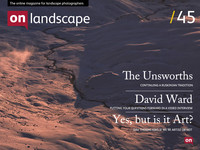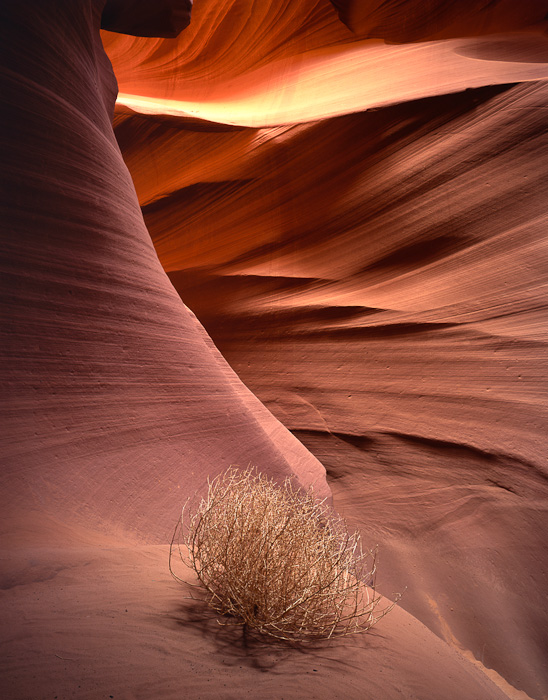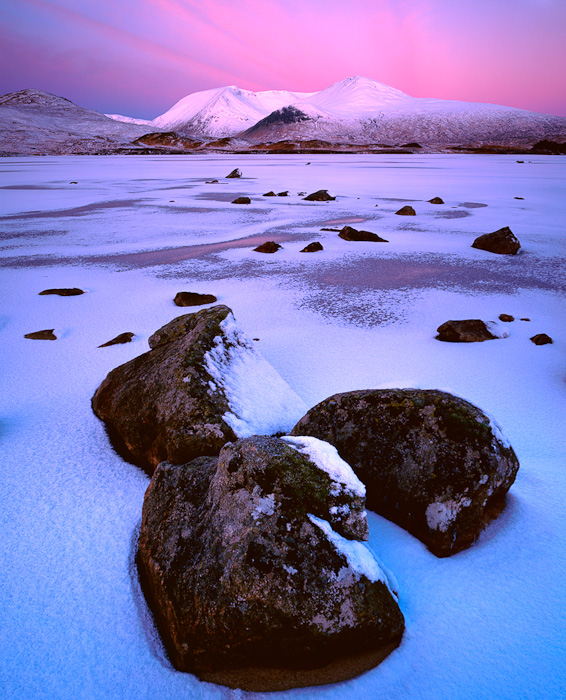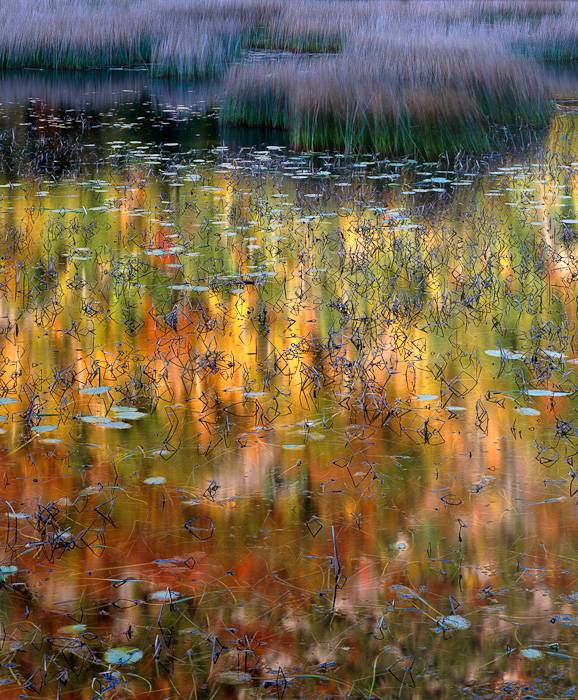Featured photographer

Tim Parkin
Amateur Photographer who plays with big cameras and film when in between digital photographs.
This week we have Phil Malpas as our featured photographer. Phil leads tours and workshop for various companies including Light and Land and My Photoschool and has books on the use of colour in photography, travel photography and a portfolio/guide book with Clive Minnit on 'Finding the Picture'.
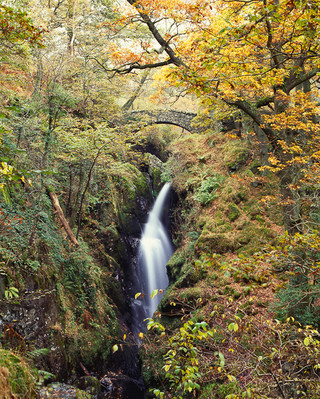 In most photographers lives there are ‘epiphanic’ moments where things become clear, or new directions are formed. What were your two main moments and how did they change your photography?
In most photographers lives there are ‘epiphanic’ moments where things become clear, or new directions are formed. What were your two main moments and how did they change your photography?
A key moment for me occurred in 1989 when after being forced to move from Northampton to Swindon with my job, I decided to enrol in a local City & Guilds Black & White Photography Course. The course was led by the inspirational Brian Walker, who thankfully insisted that even though it wasn’t part of the curriculum, we must all learn and fully understand Ansel Adams’ zone system. It took a few months for it all to sink in, particularly the concept of EV numbers and personal film speed, but I have to say that once it clicked I never looked back. It seems to me that although the digital revolution has been amazing in terms of bringing people to photography, it is a shame that it is no longer considered necessary to understand the basics of exposure and development. I know it is a clichéd, rose tinted view, but I still remember with delight that fantastic moment when my first black & white print magically appeared in the developer tray (I must dig out my enlarger some time and see if I can still remember how to make a decent print!).
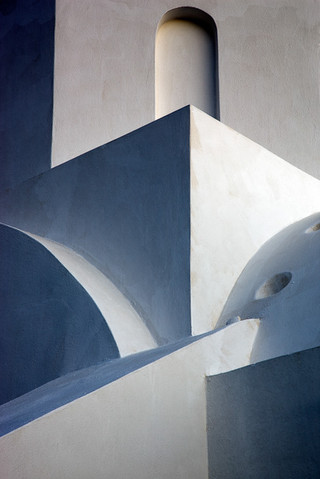 As my interest in photography grew, I began collecting books by the photographers that I admired and a big inspiration for me was “The Making of Landscape Photographs” by Charlie Waite. In 1994 I spotted and advertisement in one of the photography magazines for a “photographic holiday” in The Lake District to be led by Charlie Waite – I just knew this was for me! I managed to talk my Dad in to lending me some money and a few days before the workshop was due to start, I headed off to Ullswater to get acclimatized. To my horror the owners of the farm where the workshop was based invited me to join them for dinner that evening at the local pub, where they would be meeting up with Charlie and his colleague Sue Bishop. I can still remember how nervous I was, like a child on the first day at school, to be finally meeting up with my idol!
As my interest in photography grew, I began collecting books by the photographers that I admired and a big inspiration for me was “The Making of Landscape Photographs” by Charlie Waite. In 1994 I spotted and advertisement in one of the photography magazines for a “photographic holiday” in The Lake District to be led by Charlie Waite – I just knew this was for me! I managed to talk my Dad in to lending me some money and a few days before the workshop was due to start, I headed off to Ullswater to get acclimatized. To my horror the owners of the farm where the workshop was based invited me to join them for dinner that evening at the local pub, where they would be meeting up with Charlie and his colleague Sue Bishop. I can still remember how nervous I was, like a child on the first day at school, to be finally meeting up with my idol!
Little did I know that the trip to the Lakes in 1994 would be the start of my long relationship with Charlie’s company “Light & Land”. The third epiphany for me (I know you only asked for two Tim, but this one was really important!) occurred a few years later on another Light & Land workshop in Provence which was being led by Joe Cornish and David Ward. We had been asked to bring along some of our previous work to share with the group and to get some feedback from Joe & David. I had been shooting for a few years on a Mamiya RZ67 using Fuji Velvia film and was lucky enough to own a 6X7 projector which I carted all the way to the south of France just for this 5 minute slide show! Although the feedback was generally good (any decently exposed 6X7 Velvia tranny is impressive when projected) the key comment for me was when Joe and David suggested that I was “a frustrated large format photographer”. After seeing them use their LF cameras during the course of the trip, I became a convert and it was a few months later that I popped down to Robert White with a wallet full of cash and bought my first Ebony!
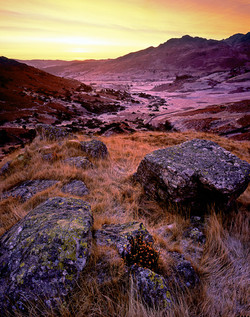 Tell me about why you love landscape photography? A little background on what your first passions were, what you studied and what job you ended up doing
Tell me about why you love landscape photography? A little background on what your first passions were, what you studied and what job you ended up doing
I think the key thing for me is not so much the love of landscape photography, more a love of the landscape itself. The photography is almost incidental, something I just happen to do when I am out enjoying the landscape. Having said that I suspect that I have visited many more places than I might have done, simply because I wanted to make photographs there. I have always thought that if I owe any debt to photography, it is that it has encouraged me to really see the world around me.
In the early 90’s I began to teach City and Guilds colour printing modules at The Blackthorn Centre in Swindon. These involved teaching people to make prints with an enlarger and actual chemistry from both transparency and negative film! I soon found that having a dozen or more students, all printing at the same time, really kept me on my toes when it came to getting a properly balanced colour print. It got to the point where I could look at a slightly dodgy print in the light room and say something like “add 10 magenta and take out 5 cyan” and miraculously all would be spot on! Interestingly this is one skill from the analogue world that translates beautifully in to digital. The ability to recognise a colour cast is still fundamental, even if the methods for removing it have changed completely.
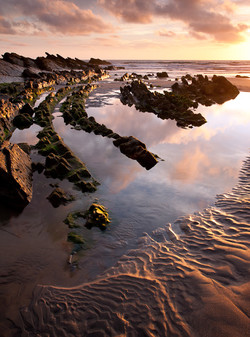 I was still working “full time” in IT, but luckily I managed to negotiate a contract that allowed me to work incredibly flexible hours. This allowed me to devote even more time to my photography and I chose to spend a fair bit of it attending Light & Land workshops. Eventually I graduated from client to assistant and was offered the chance to help out on tours with Charlie Waite and Joe Cornish. I also travelled to the States a couple of times with Joe, David Ward and a fellow L&L client and good friend Clive Minnitt where I was able to pick up a great deal more advice on the use of the Ebony from the experts. Eventually in 2001, Joe and David pulled Clive and I to one side and said “isn’t it about time you two ran your own workshop?” In May 2002, Clive and I took off for Barcelona and the Pyrenees to lead our first Light & Land workshop. At the time I would never have believed that I would subsequently lead over 50 more trips to various locations around the world.
I was still working “full time” in IT, but luckily I managed to negotiate a contract that allowed me to work incredibly flexible hours. This allowed me to devote even more time to my photography and I chose to spend a fair bit of it attending Light & Land workshops. Eventually I graduated from client to assistant and was offered the chance to help out on tours with Charlie Waite and Joe Cornish. I also travelled to the States a couple of times with Joe, David Ward and a fellow L&L client and good friend Clive Minnitt where I was able to pick up a great deal more advice on the use of the Ebony from the experts. Eventually in 2001, Joe and David pulled Clive and I to one side and said “isn’t it about time you two ran your own workshop?” In May 2002, Clive and I took off for Barcelona and the Pyrenees to lead our first Light & Land workshop. At the time I would never have believed that I would subsequently lead over 50 more trips to various locations around the world.
When leading tours, what is the most common mistake made by generally competent photographers?
Good question Tim! I had to read this carefully to make sure I understood what you were getting at – presumably you don’t mean mistakes made by “generally competent photographers” who also happen to be tour leaders? I think I’m fairly safe to assume that you mean generally competent attendees on tours. Either way I had to think carefully about this one. I think the hardest thing for even experienced photographers to achieve, is to really home in on what it is you are trying to say. So many people see something that catches their eye, but don’t really investigate the best way to portray it. This often results in a weaker result because the intended message is watered down by the inclusion of unnecessary information. By all means take the first thing you see, but surely the biggest advantage of digital is that you can then review your result straight away. Use this facility and study carefully what you have done, then ask yourself how you can improve it – and I would suggest that at least 7 times out of 10 you probably can!
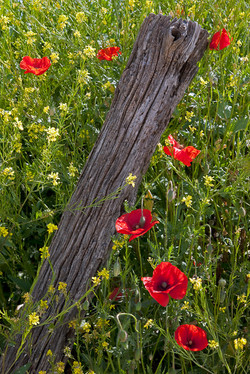 What do you think, besides composition, is the hardest thing to teach landscape photographers?
What do you think, besides composition, is the hardest thing to teach landscape photographers?
If I can, I’d like to answer this question from two points of view. Firstly if we are talking about photographers who are fairly inexperienced then the answer is simple. You don’t need to have the sky in all your photographs! I have often been quoted as saying that contrast is the enemy of colour photography, and including the sky often increases contrast and therefore makes it more difficult to capture full colour. Excluding the sky actually makes it easier – so unless it really ads something, don’t include the sky! For more experienced photographers (and I am often guilty of this one) it is important to realise that you don’t need the camera to find your picture! People often seem to need to look through the viewfinder to imagine what an image might contain. This then automatically causes them to think about a million other things (exposure, focusing, depth-of-field etc.) that do not help the picture finding process. I think some of this is caused by the fact that most people now carry a number of zoom lenses that put a wide range of focal lengths at their disposal. This confuses the visualization process. I remember for about 5 years in the early 1990s’, I only had one lens (a 110mm) for my Mamiya RZ67. My zoom was therefore my feet and I was so used to seeing the world at this focal length that I could tell you exactly what would fit in the frame without getting the camera out of the bag. In particular, when arriving at a new location, I would suggest that the camera stays in the bag and the image making possibilities should initially only be limited by the photographer’s imagination.
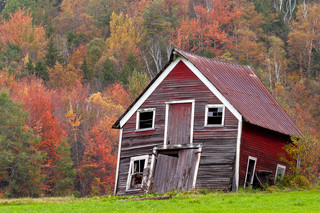 Is it better to be a full time professional landscape photographer or a part time amateur?
Is it better to be a full time professional landscape photographer or a part time amateur?
Personally I try not to use the amateur/professional categorizations when it comes to photographers. So one person happens to earn a living from their photography – this doesn’t really mean anything when it comes to the quality of the images they make. For me, the key distinction in this question is the full time / part time one. Obviously you are far more likely to make great images if you spend a lot more time out in the landscape. The biggest frustration for part-time photographers is that they do not get continuous feedback. I think you learn something each time you take the camera out of the bag. It is important therefore to do this regularly so that you can build on those things you learn. If you only make images every 6 months when you go on holiday, then you are likely to spend the first few days going over old ground and re-learning things that you have forgotten. If I was forced to distinguish then I would suggest that the best solution would be to be a fulltime amateur! That way you can invest all your time, but your only client is your own personal standards.
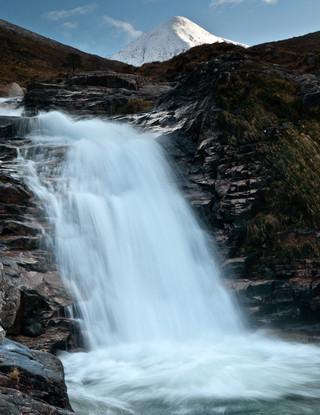 Could you tell us a little about the cameras and lenses you typically take on a trip and how they affect your photography.
Could you tell us a little about the cameras and lenses you typically take on a trip and how they affect your photography.
I have three separate camera bags that are made up as follows. The LF bag contains my Ebony 45SU with 6 lenses ranging from 72mm to 400mm. I have a huge set of Panasonic kit, including 3 GF bodies with all the lenses from 14-600mm (equiv.) and an LX5. On top of this I have recently purchased a Nikon D800 with 24-70mm and 70-200mm f/2.8 lenses. I guess this lot makes me seem like a bit of a “kit addict”, but to be honest they all have a specific purpose. I have learned that when teaching on tours and workshops, the majority of attendees will own a DSLR. Consequently I think it is important for me to own one too – if only to use as a tool for demonstrating certain techniques and ideas. When travelling to locations such as Cuba where landscape is secondary and a great deal of time is spent “on the street”, I like to travel light and the Panasonics are ideal for my purposes. I consider the Ebony to be largely for personal work, and really enjoy my far too infrequent immersion over on the “dark side”. Of course when out with my Ebony, one of the GF1s with a couple of suitable lenses comes along as an aid to visualizing subject matter to be tackled on my all too precious Velvia film.
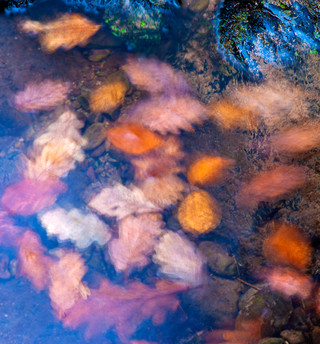 What sort of post processing do you undertake on your pictures? Give me an idea of your workflow.
What sort of post processing do you undertake on your pictures? Give me an idea of your workflow.
All my digital work is imported into Lightroom 4, where I do most of my post processing, although to be honest I change very little, preferring to get as much right in camera as possible. For a long time I owned a Canon EOS 1DS Mk3, which was incredibly prone to dust on the sensor, and I had to spend many hours in Photoshop tidying these up. Thankfully the Panasonics, and at least for now my new Nikon don’t seem to be anywhere near as bad. I enjoy monochrome photography and use NikSoft Silver Efex Pro for converting my digital images to monochrome. I love the flexibility that this plug-in gives me. I also still enjoy shooting monochrome film on my Ebony and I process these myself before scanning them on an Epson v750 Pro scanner.
Tell me about the photographers that inspire you most. What books stimulated your interest in photography and who drove you forward, directly or indirectly, as you developed?
As mentioned earlier, my first mentor was Brian Walker whose enthusiasm was infectious. Through Brian I was lucky enough to meet and make friends with Barry Thornton, who really opened my eyes to the lengths you could go to in order to achieve a pre-visualised result with monochrome film. Barry emphatically emphasized the need to ignore quoted film speeds and to test each film/developer combination to work out your own personal exposure index. He demonstrated how this frequently turned out to be more than a stop slower than the makers would have you believe.
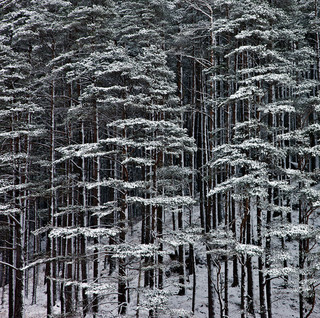 Following on from Charlie Waite “The Making of Landscape Photographs”, and coincidental with my obsessive interest in all things LF, I was mesmerized by Joe Cornish “First Light” and subsequently David Ward “Landscape Within” (both of which I am honoured to have received a tiny mention in as a fellow member of the “CUBS” Photographic Society). Through working as a tour leader with David Ward, I have been fortunate enough, over the years, to see a large cross section of his original transparencies on the light box – truly inspirational. More recently I have been extremely excited by the success of a regular co-traveller Gerry Andrews, who is currently exhibiting his fantastic 1970’s images from the Limerick Milk Market at the local Hunt Museum. Lastly I have the deepest respect for the work of the wildlife film maker John Aitchison. Some of the sequences he produced for the BBC series Frozen Planet are (in my humble opinion) almost beyond belief. Over time, I have collected a large library of photographic books. I guess apart from those mentioned above, others I glance through fairly regularly would be: Michael Kenna - “Images of the Seventh Day”; Tom Blagden Jr. “First Light” (coincidentally the same title as Joe’s book, this contains images of one of my favourite places – Acadia National Park) and Andris Apse “New Zealand Landscapes” (which contains some stunning panoramics).
Following on from Charlie Waite “The Making of Landscape Photographs”, and coincidental with my obsessive interest in all things LF, I was mesmerized by Joe Cornish “First Light” and subsequently David Ward “Landscape Within” (both of which I am honoured to have received a tiny mention in as a fellow member of the “CUBS” Photographic Society). Through working as a tour leader with David Ward, I have been fortunate enough, over the years, to see a large cross section of his original transparencies on the light box – truly inspirational. More recently I have been extremely excited by the success of a regular co-traveller Gerry Andrews, who is currently exhibiting his fantastic 1970’s images from the Limerick Milk Market at the local Hunt Museum. Lastly I have the deepest respect for the work of the wildlife film maker John Aitchison. Some of the sequences he produced for the BBC series Frozen Planet are (in my humble opinion) almost beyond belief. Over time, I have collected a large library of photographic books. I guess apart from those mentioned above, others I glance through fairly regularly would be: Michael Kenna - “Images of the Seventh Day”; Tom Blagden Jr. “First Light” (coincidentally the same title as Joe’s book, this contains images of one of my favourite places – Acadia National Park) and Andris Apse “New Zealand Landscapes” (which contains some stunning panoramics).
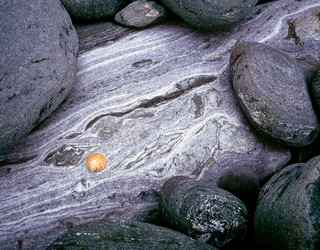 What has been your biggest achievement in photography?
What has been your biggest achievement in photography?
Sorry Tim – I’d like to cheat again here by offering a couple of things that I am particularly pleased about!
In 2007 my first book “Capturing Colour” was published. This had involved a huge amount of effort on my part over a period of almost 18 months, all based around the title which was all the input the publisher gave me. I have recently had email contact with the publisher and have learned that this little book has sold 28,000 copies around the world including 4,500 in English, 12,000 in Chinese , 3,500 in Spanish, 4,000 in French and 4,000 in German.
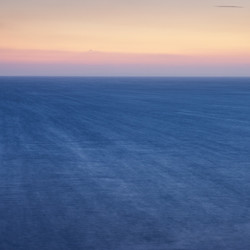
I have had a number of lovely emails from people all over the world who have purchased a copy including a lady in Bogota who said “Thank you very much to write that wonderful book, it´s easy to read, beautiful and perfect for me, now it´s my bible!” As far as I am concerned it was worth the 18 months of toil just for that one email!
In a similar way I think I am most proud when I look at some of the photographers who attended some of my earlier workshops, who, in the intervening years, have blossomed in their own photographic endeavours. Obviously I can’t name anyone specific, but I can think of a few people who first turned up with little or no idea how to work their camera, let alone what they might point it at. Now these guys are producing some inspirational photography and of course, although I cannot claim too much credit, I like to think that I might have had a tiny part in their road to success. David Ward described this “warm feeling” about teaching in ONLANDSCAPE Issue 27 far more succinctly than I can, but I can say that I agree wholeheartedly with everything he said.
Tell me what your favourite two or three photographs are and a little bit about them.
This was my first visit to Lower Antelope. I decided to have a good look round before committing to anything, and walked the whole length of the canyon in both directions before spotting this tumbleweed on a ledge that was well above head height. I scrambled up on the ledge, being careful not to make any footprints, where there was just enough room for me and my tripod. Unfortunately the main entry to the canyon lies directly behind the tumbleweed and I had to shout to anyone coming in to wait during each of the 45 second exposures I made!
I have been lucky enough to see the sunrise on Rannoch Moor on many occasions, mainly as part of the Winter in Glencoe tours I run each year with David Ward. This particular view of the Black Mount complex across Lochan Na h'Achlaise is one of my favourites and on this cold January day conditions were perfect. I particularly like the way that the three foreground boulders mimic the shapes of the distant mountains. Regardless of the weather conditions, this just has to be one of the best places on the planet to witness the sunrise.
This image is from Acadia National Park in northern Maine. I used the asymmetric rear tilt on my Ebony SU45 to good effect here. The plane of focus is laid on to the surface of the water and the aperture is set to give just enough depth of field to ensure that the reeds and small stalks of the surface plants are sharp. The reflections of the sunlit hills are therefore out of focus giving this lovely swirling effect. The sun was rising rapidly behind me and I had to work quickly – one of the reasons I was glad I had asymmetric rear movements which I find much quicker and easier to use.
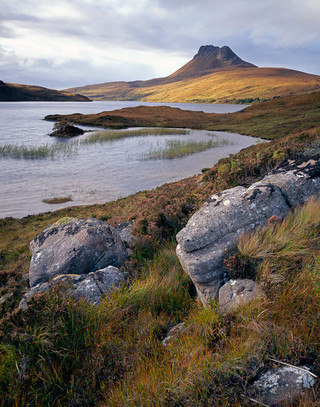 If you were told you couldn’t do anything photography related for a week, what would you end up doing (i.e. Do you have a hobby other than photography..)
If you were told you couldn’t do anything photography related for a week, what would you end up doing (i.e. Do you have a hobby other than photography..)
I know it is really boring, but I love to play golf! In some ways it goes back to that love of the landscape, I play at a course on the Marlborough Downs, which on a summer’s evening is quite simply one of the most beautiful places on the planet. You can see for miles in every direction, and it is so peaceful! My round is often accompanied by the local red kite, numerous buzzards and kestrels, a few deer and an army of enormous hares that charge around in a maniacal frenzy. In terms of a complete break from photography it would be golf for me every time. Having said that I could always cheat as I have recently been asked to put my landscape photography skills to work in producing some images of the course for my club to use in their marketing!
What sorts of things do you think might challenge you in the future or do you have any photographs or styles that you want to investigate? Where do you see your photography going in terms of subject and style?
In 2010 I was fortunate to be asked to be a presenter at the “Nature in Focus” events which were co-sponsored by Canon, Paramo and Wild Arena (the 2011 event was covered in OnLandscape issue 24). During the 2010 event, I remember watching an excellent presentation by Ben Osborne in which he showed a beautiful still image of a snow covered woodland scene. After a few seconds the still image was merged with a moving one and it started to snow! Once again after a few seconds he merged back to the still. I thought this was beautiful – requiring all the skills of pure landscape photography whilst incorporating the moving image. Although I am yet to make any attempts at doing something similar myself, the idea still intrigues me and it is something I am determined to try when the right subject presents itself.
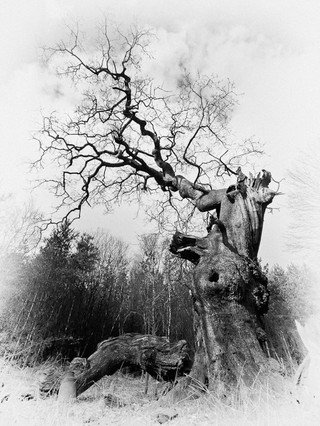 I also hope that somehow, in amongst all the demands on my time, I will eventually find a way to spend more time with my beloved Ebony. One day in the not too distant future, I would also like to resurrect my analogue darkroom (I still have all the kit including a 5X4 enlarger and a spectacular Nikkor 150mm enlarging lens) and even if it is pure self-indulgence, I would like to return to that magical moment when the print appears in the developer tray.
I also hope that somehow, in amongst all the demands on my time, I will eventually find a way to spend more time with my beloved Ebony. One day in the not too distant future, I would also like to resurrect my analogue darkroom (I still have all the kit including a 5X4 enlarger and a spectacular Nikkor 150mm enlarging lens) and even if it is pure self-indulgence, I would like to return to that magical moment when the print appears in the developer tray.
Who do you think we should feature as our next photographer?
As part of writing this article, I flicked back through some previous featured photographers and their recommendations, to see if there were any I concurred with that haven’t happened yet. I know David Ward has written regularly, but I would still like to hear his story in the FP slot. I would also go along with the calls for Anna Booth to take part (there is a distinct bias to male photographers in the current line-up) and although he was interviewed back in Issue 2, I would love to see Anthony Spencer as the featured photographer.
Many thanks to Phil Malpas for his answers and if you want to see more of Phil's work you can visit his website at www.philmalpas.com or regular updates at facebook (Don't forget to like!) and twitter (@philmalpas).

